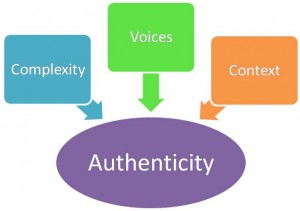At a Poynter Institute seminar kickoff today, about a dozen faculty members from Statesboro to San Luis Obispo and from Miami Beach to Toronto gathered to discuss “Teaching Diversity Across the Curriculum.” In Poynter’s words, “If tomorrow’s journalists are to report and write about a dynamic, increasingly diverse society, they’ll need guidance in the classroom. Whatever the course, there’s a place for teaching diversity — issues of race, ethnicity and gender — across the journalism curriculum.”
What do journalists stand for? Here are many of the ideas we brainstormed, in no particular order:
- Truth, justice & the American way
- Accuracy
- Ethics
- Fairness
- Completeness, over the long haul
- Honesty
- Self-awareness
- Integrity
- Mensch (a Yiddish term)
- Currency (being current)
- Relevance
- Accountability
- Power (as journalists, we have it and must use it wisely)
- Power of storytelling
- Understanding (by the journalist, of the people and their issues)
- Balance
- Principles
- Love of storytelling
- Love of writing
- Love of reading
- Transparency
- Empathy
Do you know an excellent story when you read one? What makes a story excellent? Here are some of our thoughts. Again, these are in no particular order:
- Transports you
- Universality
- Passion
- Rich characters that you care about (even if you don’t like them)
- It’s about people
- Tension à resolution
- Something new
- Gripping, through use of quotations and anecdotes
- Great words
- Anticipation
- Balance
- Visuals through wordcrafting
- Opens new vistas for us
- Structure
- Seamless scene setting
- Sense of time and place
- Compelling
- Imaginative / creative
- Permanence
- Discipline
Seminar leader Lillian Dunlap shared a formula with us, which I’ve graphically represented below.
Stay tuned for more as this weeklong seminar progresses.



